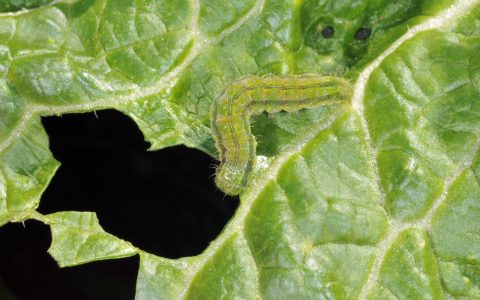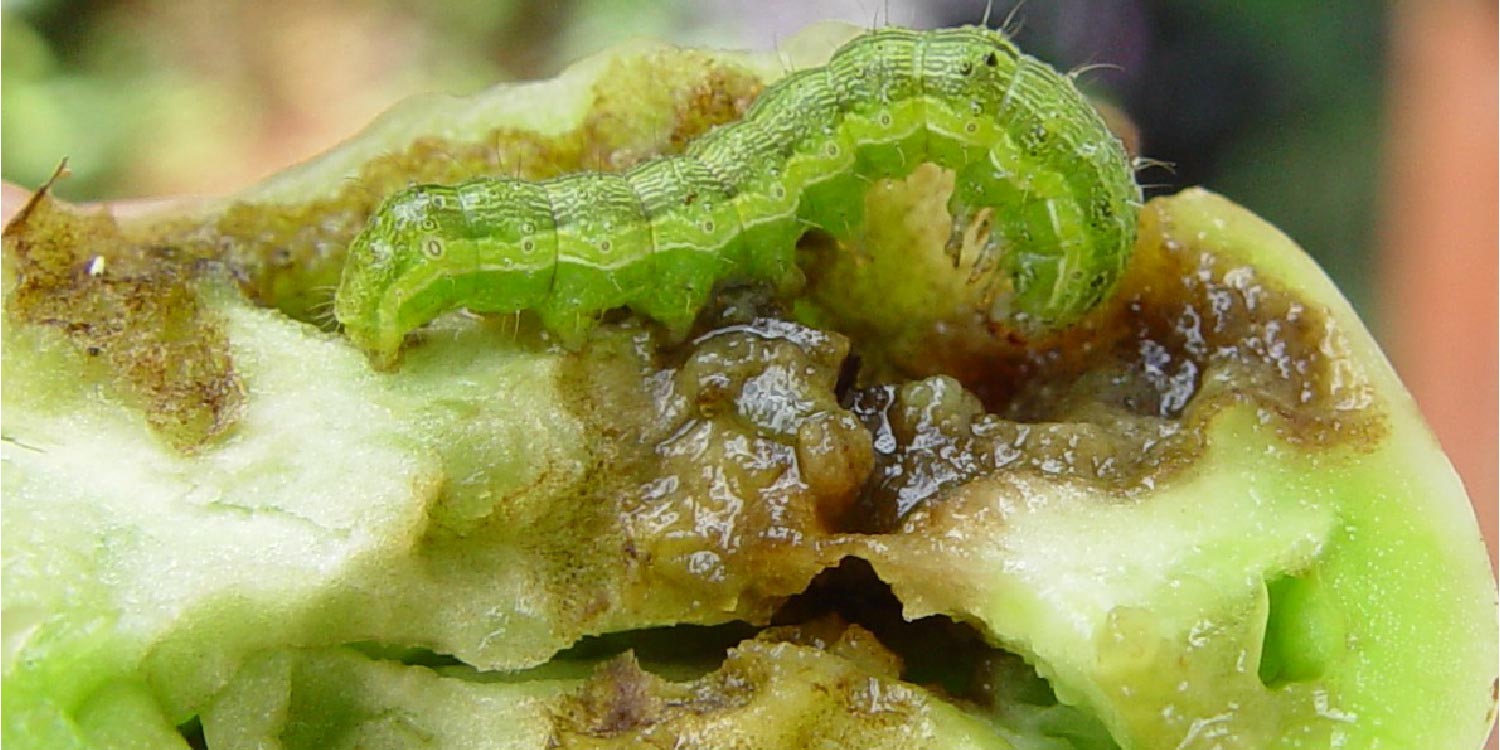
Heliothis
WHAT IT IS AND HOW TO ELIMINATE
Espinacas y similares
Heliothis
Helicoverpa Armigera
Pathogen:
Insect
Type:
Risk to the plant:
HIGH
Orugas o gusanos

WHO CAUSES IT?
Helicoverpa armigera is a lepidopteran that has become one of the most destructive pests of numerous crops, including spinach and the like. Adult females lay their eggs, usually in isolation, on the leaves or flowers of host plants. The eggs hatch in a few days, giving rise to larvae that go through five or six larval stages before becoming pupae. During their development, the larvae vary in color and size, adapting to be more aggressive as they grow. These larvae are highly voracious and can devour large portions of leaves, as well as pierce and damage shoots. The pupa develops in the soil, in a silk cocoon mixed with soil particles. From this pupa an adult emerges that repeats the cycle, achieving multiple generations in a single year, which increases the damage capacity of this pest.
SYMPTOMS
Heliothis disease, caused by Helicoverpa armigera, causes significant damage to spinach and similar crops due to the destructive action of the larvae. The larvae feed on the leaves and tender shoots, which causes weakening of the plants and directly affects their growth and production capacity. These lesions encourage the entry of secondary pathogens, further aggravating the damage to the crop.
- Holes in the leaves of irregular shape
- Direct damage to the shoots and young parts of the plant
- Loss of vigor in the plant
- Discoloration and deformation of the leaves
- Greater susceptibility to secondary infections



DEVELOPMENT CONDITIONS
Temperature:
18°C - 35°C
Humidity:
60% - 85%
HOW IS IT SPREAD?
Wind, migration of adults, infested plants, contaminated soil, planting materials, agricultural machinery
HOW TO ELIMINATE IT?
Home treatments
Natural allies
Chemical treatments
RECOMMENDED PRODUCTS TO ELIMINATE THE PEST
REPELLENT PLANTS
Wormwood (Artemisia), Basil, Tansy, Rosemary
RECOMMENDATIONS
- Check your plants frequently, especially the underside of the leaves.
- Remove the caterpillars by hand if they are few and put them away from your crops.
- Use nets or mesh to prevent butterflies from laying eggs.
- Plant flowers that attract allied insects such as ladybugs or small wasps that feed on caterpillars.
- Place traps with pheromones to capture the adults.
- Apply natural products such as Bacillus thuringiensis (Bt), which is safe for people and animals.
- If you use insecticides, always follow the instructions on the container and do not apply them during hours of strong sun.
















